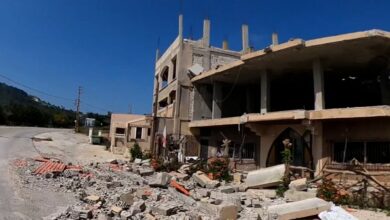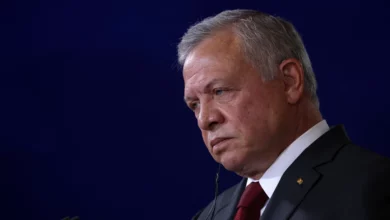The 16th Non-Aligned Movement Summit has closed in Tehran, Iran. The conference halls were cleaned up, the delegates have boarded planes back home, and the bombed out cars of Iranian nuclear scientists are being moved to other sites for public exhibition.
Born in 1961, the Non-Aligned Movement is now over 50 years old, a decade or so younger than the United Nations. Unwilling to remain hostages to nuclear warfare and to nuclear détente, the new states of the 1950s wanted to chart out an independent path — not as proxies for an American-Soviet Cold War. The five major initiators of the movement, Egypt, Ghana, India, Indonesia, and Yugoslavia, had either just emerged from colonial rule or had broken away from alliances that appeared one-sided to them. It was this independence that they named “non-alignment.” After the Non-Aligned Movement summit in 1961, India’s Jawaharlal Nehru and Ghana’s Kwame Nkrumah traveled to Moscow while Indonesia’s Ahmed Sukarno and Mali’s Modibo Keita went to Washington, carrying an “Appeal for Peace,” asking the major powers to return to the negotiation table. Peace was their watchword, because, without a reduction in threats and arms spending, social development would have been severely compromised.
The movement was part of the ensemble of the Third World Project, which included the bloc of the South in the United Nations (the G77) and the experiments in new kinds of social development in the Global South. It thrived in its first two decades, building to a fever pitch of expectation with the 1973 UN Resolution for the crafting of a New International Economic Order. This was to be “non-alignment” in the domain of politics and economics.
Ten years after the New International Economic Order, at the 7th Non-Aligned Movement Summit in New Delhi, anxiety filled the movement — storm clouds were on the horizon, and many delegates saw them. The previous year, Mexico had fallen into bankruptcy. In Boston, the head of the World Bank (and former head of Bank of America) Tom Clausen said, “For the first time since the Second World War, the momentum of Third World development has, for the most part, been broken.” Forty-two countries were locked in repayment negotiations for debt payments they could not sustain. “The IMF either eases off and loses credibility,” said a senior US official, “or it insists and the debtor stops paying.” The IMF insisted, countries declared bankruptcy and had to accede to Structural Adjustment Programs that stripped them of their independence so as to regain financial liquidity.
The debt crisis of the 1980s broke the back of the Third World Project, and it shattered the confidence of the Non-Aligned Movement. The institution, which represents two-thirds of the world’s governments, continued to function — but barely. Non-alignment as a guiding doctrine became fodder for nostalgia, as indebted countries began to forge links with a resurgent West in light of the collapse of the East. Bilateral free trade agreements with the US and Europe came alongside IMF programs for austerity; military deals that allowed US bases on formerly proud anti-colonial soil provided the infrastructure for the emergence of US primacy. The Non-Aligned Movement met, but it did not propose anything.
The tide began to turn in the early 2000s. In 2003, the movement’s chair, South Africa’s Thabo Mbeki, attempted to create a peaceful solution against the US rush to war against Iraq. Massive street protests across the South (and in the North) seemed to be on the side of a peaceful settlement (including the 20 March protest in Egypt, which emboldened the antiwar activists toward Kefaya, a core part of the anti-Mubarak resistance from 2004 to 2011). The US pressured South Africa to expel Iraq’s ambassador — but failed. It did, however, go to war, disregarding the word from the street and from the Non-Aligned Movement.
In 2003 again, the US and Europeans refused to honestly discuss development and trade. They insisted that subsidies to northern agriculture did not violate their own free trade nostrums. This incensed the South at the Cancun meeting of the World Trade Organization. Brazil, China, India, South Africa, the group of the Least Developed Countries and the African, Caribbean and Pacific bloc resisted pressure from the World Trade Organization Commissioner Pascal Lamy to “steer” the organization to a “compromise,” which would mean victory to the North. The South prevailed, and Lamy lamented, “The World Trade Organization remains a medieval organization,” which meant that it was not pliable to Northern direction.
The experience of the Iraq War and Cancun led to the creation of a new group, the IBSA Dialogue, which included one country from each of the Southern continents: India, Brazil, and South Africa. Complementarities in these countries led them to increase trade among themselves, and to work together at international forums for their interests and that of the South in general. Over the course of several meetings, the dialogue framed a new intellectual agenda, now not so much non-alignment as regionalism and multi-polarity. Brazil brought the Latin American experience to the table — notably the process that led, in 2004, to the creation of the trade bloc, the Bolivarian Alliance for the Americas, and, in 2010, to the creation of the political bloc, the Community of Latin American and Caribbean States. The 14th Non-Aligned Movement Summit in Havana in 2006 saw more discussion of regionalism than at any meeting previously. There was renewed buoyancy as several countries had already come to this idea independently. Regionalism and multi-polarity became the central intellectual themes of the BRICS, when China and Russia joined Brazil, India and South Africa to create a new major world grouping. BRICS accounts for 40 percent of the world’s global GDP.
Regionalism and multi-polarity were at the heart of the 16th summit. Side deals enhanced regional economic development, and provided the basis for regional political alliances without US primacy. For example, at this summit’s sidelines, Afghanistan, India and Iran began a process to shore up their mutual links through the southeastern Iranian port of Chabahar. US-occupied Afghanistan imports 50 percent of its oil from Iran, despite US and European sanctions. Parochial US aims to isolate Iran are simply not feasible in a multipolar world. Solutions to the Syrian crisis have defeated the US and the Europeans, but a new regional opening from Egypt, via the Contact Group, offered a glimmer of hope. It is true that Egypt’s President Mohamed Morsy seemed sectarian in his speech at the summit. Equally, Iran is eager for a rapprochement with Egypt, not only to undo 30 years of mutual disregard, but also to be a player in the Arab Spring. The regional advantages are apparent to these countries, which is why even Saudi Arabia and Turkey are willing to become part of this process. They need each other. As clients of US primacy, they have gained very little — only a threat of regional war. As regional actors committed to regional solutions, there is, at least, hope.
Non-Aligned is simply the historical word in the movement’s name. But it does not define its politics. Its emergent politics are no longer for non-alignment but for regionalism and multi-polarity. The IMF predicts that in 2016, the US will no longer be the world’s largest economy. Debt crises in the North and austerity solutions will equally put pressure on its ability to foist its military power across the planet. The Chinese, who will have the largest economy, are committed to multi-polarity. This is why the new intellectual orientation of the Non-Aligned Movement — regionalism and multi-polarity — is actually much more realistic than a re-assertion of Northern domination. There will not be another American Century. We are at the dawn of a new multipolar experiment.
Vijay Prashad is the author of Arab Spring, Libyan Winter (AK Press, 2012 and Turkish edition, Yordam Kitap, 2012). His book The Darker Nations: A People’s History of the Third World (2007) was chosen as the Best Nonfiction book by the Asian American Writers’ Workshop in 2008 and won the Muzaffar Ahmed Book Award in 2009.
This article was originally published in Egypt Independent's weekly print edition.




